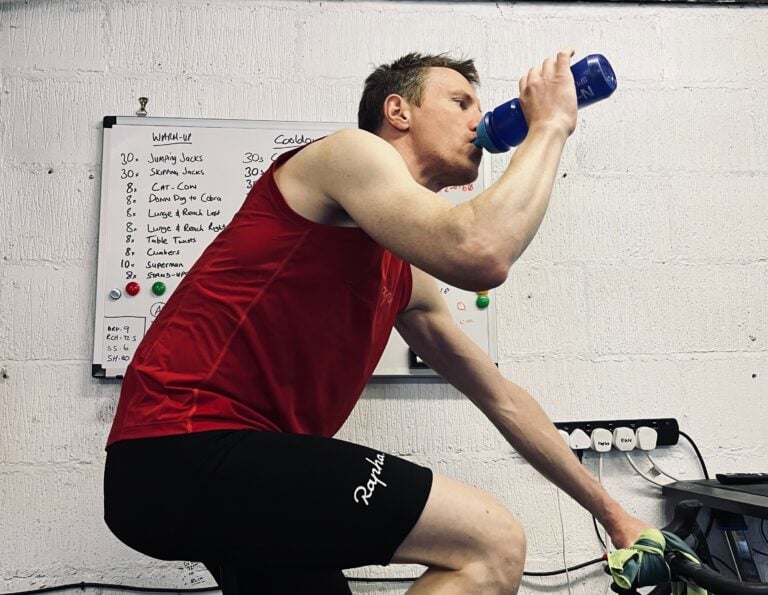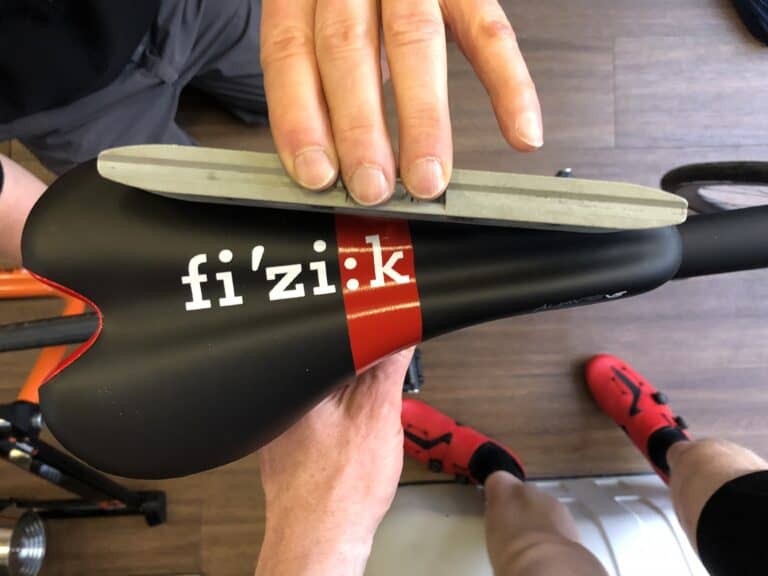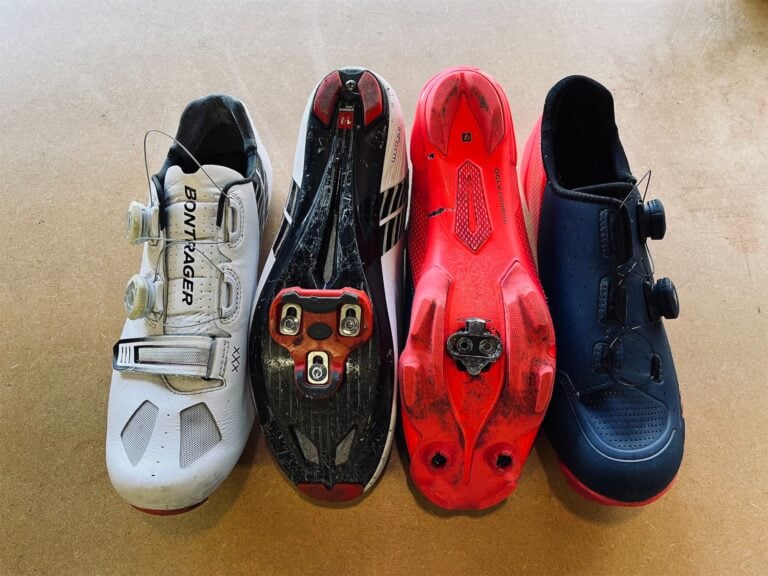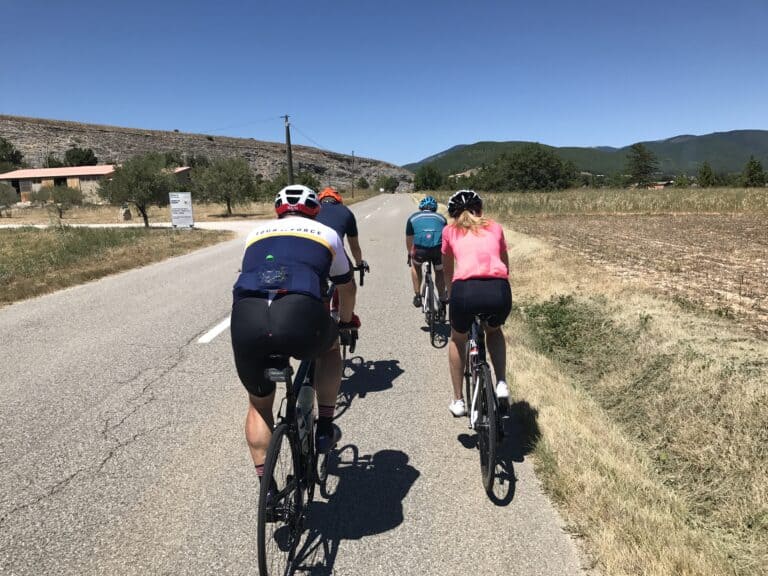If you’re longing to get out on your bike and boost your aerobic fitness, you’ll need to be prepared to create a training plan to help you achieve your goals. Cycling endurance training for beginners can be tricky to navigate, though. But it can be an exhilarating “ride” filled with challenges and rewards that make your effort worthwhile.
This article will guide you and give tips and tricks to kickstart your cycling journey. So, saddle up and get ready to unlock your cycling potential as you embark on this exciting journey ride!
Key Takeaways: Cycling Endurance Training for Beginners
- Endurance training gradually increases the duration and intensity of rides to improve your fitness and sustain longer workouts
- Setting SMART goals is a good place to start for beginners and can keep you motivated and focused on your journey
- Creating a plan for proper nutrition and hydration will help you endure longer rides
- Rest and recovery are important for allowing your body to adjust to longer rides
- There’s nothing worse than an uncomfortable ride. So be sure to fit your bike correctly and invest in the right equipment

Getting Started
Endurance training for beginner cyclists is a systematic approach to increase the intensity and duration of cycling workouts slowly. It helps to improve cardiovascular fitness and muscular endurance. Plus, it improves your body’s ability to sustain your prolonged cycling training sessions.
Endurance training generally lays the foundation for long rides and more difficult terrain. It does this by focusing on steady-state cycling and interval training.
As a beginner cyclist, creating endurance cycling training plans can help to ease the training load and build your fitness. These training plans usually include nutrition, rest, and technique improvement. These factors can improve your cycling performance and maximize your efforts.
Setting goals
You should always set realistic and achievable goals that align with your long-term aspirations. Whether it’s completing a certain distance or participating in cycling events, having a goal will give you motivation and direction.
It’s best to create goals that follow the SMART rule. This means that your goals should be Specific, Measurable, Achievable, Relevant, and Time-bound.

Understanding training zones
Understanding training zones is important for you to structure your workouts. It may also help to optimize your cycling training.
These zones are defined intensity ranges that correlate with physiological processes during training, including your heart rate. In fact, training zones are typically categorized based on your maximum heart rate or perceived exertion.
For less experienced riders, starting with low-intensity zones like Zone 1 or 2 is common, which focus on building aerobic capacity and endurance.
Creating a cycling training plan for beginners
Once you have clear goals and a better understanding of your endurance zone, you can work on creating a cycling training plan. This includes creating a schedule for the frequency and duration of your training sessions, including which zones will need to be included in your rides.
When you start training, you should aim for around 3 – 4 sessions per week, taking a rest day in between sessions to allow your body to rest. You should also start with shorter, easier rides and increase the time and difficulty to keep challenging yourself to improve.
Tips for Endurance Training
No matter where you are in your journey, you can benefit from training tips (and cycling tips) to boost the effectiveness of a cycling training plan. These helpful tips may be particularly important when you’re setting up a cycling training plan for beginners:
- Gradual progression: You should gradually increase the duration and intensity of the rides on your cycling training plan to build your endurance. You can start with shorter distances and a steady pace, then incrementally increase the length of your rides and challenge yourself with higher intensities.
- Consistency is key: Cycling training plans aren’t worth much without consistency! You should try to ride consistently and stick to your training plan, aiming for around four weekly rides. Don’t forget to find a balance between training and recovery to avoid injury.
- Vary training intensity: Try incorporating a mix of low-intensity and high-intensity ride intervals or hill repeats. This will help stimulate different body energy systems and improve your overall performance. Plus, this variety will improve your body’s ability to sustain training for longer periods.
- Longer rides: Include long rides at a steady, moderate intensity in your training plan. Not only will this build endurance, but it will also boost your fat-burning capacity.
- Core and strength training: It may be a good idea to incorporate core and strength training exercises into your plan that target your leg’s muscle groups that are used for cycling. Strengthening your core, legs, and upper body helps to improve your power, stability, and cycling efficiency.
- Monitor and adjust your training plan: Be sure to keep track of your training progress, including the distance, duration, and intensity of your rides. You can use this information to adjust your plan to meet your needs better and visualize your progress.
- Mental preparation: Endurance cycling also requires mental resilience. Try to develop strategies that help you to stay focused and positive during challenging or long training sessions. You can also break your ride up into small milestones to help keep you motivated on training rides.
- Give yourself a break: You should always allow yourself time for rest and recovery to promote adaptation and avoid the risk of overtraining. Remember to listen to your body and rest when you need it! Recovery rides at a low intensity can also help to aid in active recovery.
Nutrition and Hydration
There are several health benefits to cycling, which is what makes it such a popular sport. Still, your training efforts may be in vain without the proper nutrition to fuel your rides. It’s also important to stay hydrated on long rides to avoid the risk of injury.
Pre-ride fuel
You should consume a balanced meal or snack containing carbohydrates, proteins, and healthy fats 2-3 hours before your ride. This will provide you with the necessary energy to sustain your workouts and keep you going.
Hydration
Aim to start your ride with the right level of hydration by drinking water in the hours leading up to your workout.
During the ride, you should also sip water regularly and drink 17 to 34 ounces (500ml to 1 liter) of water per hour, depending on the intensity and weather conditions. In warmer weather, you should aim to drink even more to stay hydrated. You should also be drinking electrolyte-replenishing drinks on longer or more intense rides, especially if you are sweating!

On-the-bike nutrition
While you’re on your ride, you’ll want to eat easily digestible carbohydrates to maintain your energy levels. This can include food like energy bars, energy drink mixes, and energy gels. You may want to aim for around 2 to 3 ounces of snacks per hour of your ride or 1 gram per kilogram of body weight – so 80g for an 80kg rider. Still, you can increase or decrease this amount depending on your training stimulus.
TIP: If you are going to be in the saddle for a few hours or more, don’t start downing energy chews or gels at the start. These ‘Quick Energy’ products will be spiking sugar levels, and there’s no way you can keep consuming enough chews and gels to sustain your energy levels.

Post-ride recovery
Within 30 minutes of your workout, you should consume a post-workout snack. You can also eat a carbohydrate-rich meal and plenty of protein to replenish your glycogen stores and support muscle repair.
Rest and Recovery
Rest and recovery are vital components of any training plan – particularly for beginner endurance cyclists. But resting is more than simply not going for a ride. In fact, there are several ways to aid the process and improve your training.
During endurance training, your body experiences stress and micro-tears in your leg’s muscle groups. Rest days will help your body to repair and adapt to training stress, leading to better performance and a lower risk of injuries.
Although it’s often overlooked by cyclists, quality sleep is essential for recovery during your training. As such, you should aim to get 7 – 9 hours of uninterrupted sleep each night to promote tissue repair and rest. And, if you feel more tired than usual, it may be a sign that you need to incorporate more rest into your schedule. So be careful not to ignore the signs!
Active recovery is another fantastic way to help boost your overall endurance – while still getting the rest you need.
You can seamlessly incorporate light activities like walking at an easy pace or gentle stretching to integrate this recovery method into your training. Stretching activities can help to improve your mobility, while other light exercises can promote blood circulation and flush out metabolic waste.
While proper nutrition is important during training, it’s just as important on your rest days. You should ensure that you provide your body with adequate nutrition, including carbs, protein, and healthy fats, to support your recovery. You can also eat nutrient-rich foods like fruits, vegetables, lean protein, and whole grains to balance out your meals.
Remember, rest and recovery are just as important as your training. When you’re taking a day off, you’ll also need to relax and engage in activities that help you unwind. A refreshed mind is the most powerful tool you can have to improve your overall well-being and recovery.
Bike Fit and Equipment
Achieving proper bike fit and suitable equipment is crucial to enhance your workouts’ comfort, efficiency, and enjoyment. These factors are even more important for endurance training because you will need your equipment to endure just as much as you do.
Bike fit
You may want to seek professional assistance or guidance from experienced cyclists or a bike shop to ensure your bike is properly fitted. A proper bike fit involves adjusting your saddle height, handlebar position, and reach to match your body.
A well-fitted bike can reduce the risk of discomfort, fatigue, and potential injuries for endurance. Remember, you’ll also want to pick the right type of bike to ensure you’re prepared for your training.

Saddle comfort
If you’re planning on riding for long periods, investing in a comfortable saddle that suits your body can help to give you a more pleasant workout. Saddles come in different widths and shapes, so be sure to test out a few before you make your decision.

Footwear and pedals
Try using cycling shoes with a secure fit and efficient power transfer. You can pair them with the right pedals, such as clipless, based on your preferences and riding style. Clipless pedals offer better control and more efficient power transfer.

Clothing and accessories
To help keep you cool, you’ll want to invest in some breathable, moisture-wicking clothing. This will help you to regulate your body temperate on long rides. Of course, you can complete your gear with sunglasses, padded shorts a well-fitting helmet, and gloves (if you must!).

Upgrades
As you progress in your cycling journey, you might want to consider upgrading equipment like your wheels, tires, or drivetrain to enhance your performance. Still, you may want to prioritize the fundamentals before upgrading your bike.
Next Steps: Join a Local Cycling Club or Find a Training Partner
As a beginner endurance cyclist, you might want to take your skills to the next level by getting personal coaching from an experienced cyclist. On the other hand, you can also learn by finding a training partner or joining a local club and going on a group ride.
You can keep each other motivated by having a network of other cyclists to train with. You can also gain valuable insights into optimizing your training plan and reaching your goals.

FAQs
Can I participate in cycling events as a beginner?
Yes, plenty of beginner-friendly endurance cycling events are catered to new endurance cyclists. Participating in these events can help you hone your skills and work towards your goals while also allowing you to connect with other local enthusiasts.
What should I take with me on long rides?
As a beginner endurance cyclist, you’ll want to keep some essential items with you to improve your training. Some of the most important items include:
- Spare inner tubes
- A tire pump and multitool
- Food and water
- A phone and money in case of emergencies
References
https://www.evoq.bike/blog/building-cycling-endurance
https://www.cyclescheme.co.uk/community/how-to/cycling-training-for-beginners
https://www.bikeradar.com/advice/fitness-and-training/5-ways-to-improve-your-cycling-endurance/
https://www.sciencetraining.io/2023/7-ways-to-help-you-build-cycling-endurance/
